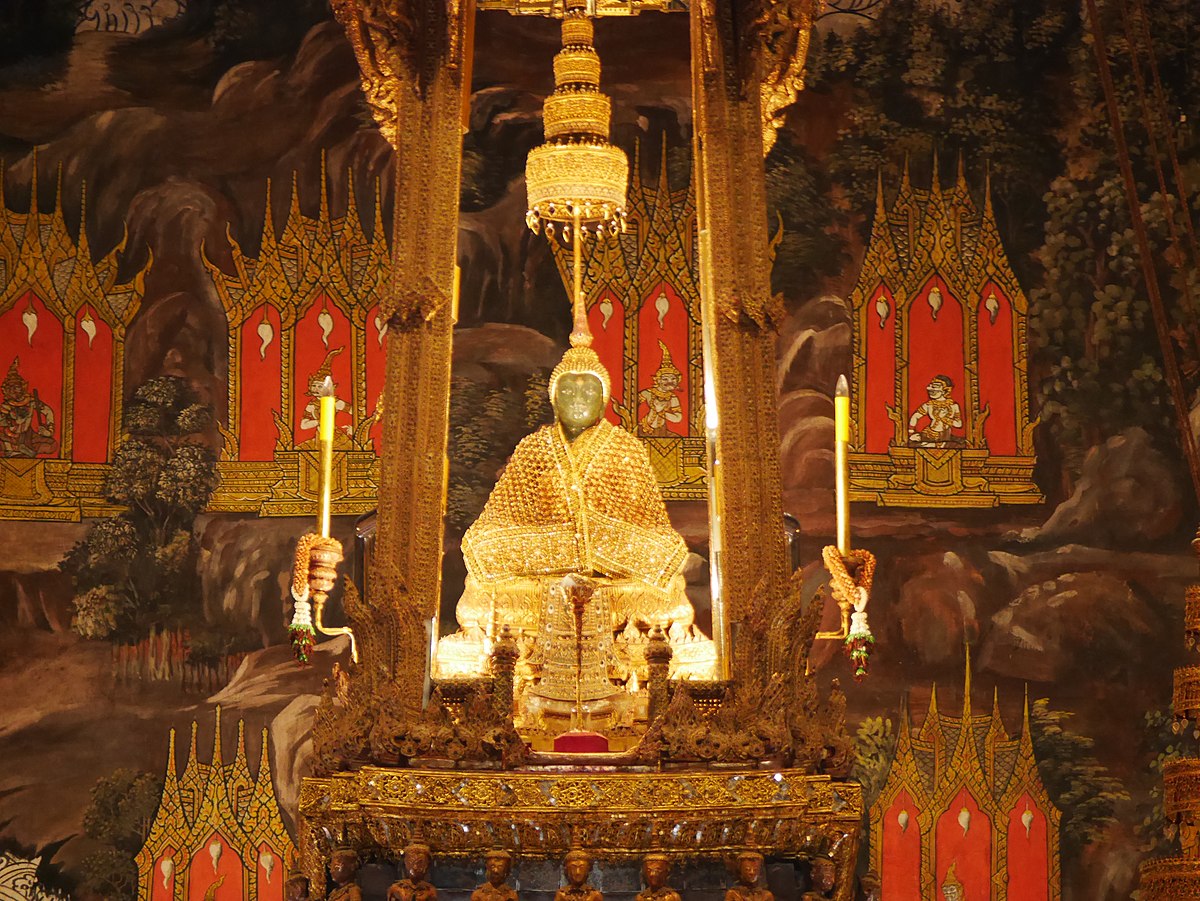
King Photisarath
Vientiane, LaosKing Photisarath (1520–1550) was one of the great kings of Lan Xang, he took Nang Yot Kham Tip from Lanna as his queen as well as lesser queens from Ayutthaya, and Longvek.[33] Photisarath was a devout Buddhist, and declared it as the state religion Lan Xang. In 1523 he requested a copy of the Tripiṭaka from King Kaeo in Lanna, and in 1527 he abolished spirit worship throughout the kingdom. In 1533 he moved his court to Vientiane, the commercial capital of Lan Xang which was located on the floodplains of the Mekong below the capital at Luang Prabang. Vientiane was the principal city of Lan Xang, and lay at the confluence of trade routes, but that access also made it the focal point for invasion from which it was difficult to defend. The move allowed Photisarath to better administer the kingdom and to respond to the outlying provinces which bordered the Đại Việt, Ayutthaya and the growing power of Burma.[34]
Lanna had a series of internal succession disputes throughout the 1540s. The weakened kingdom was invaded first by the Burmese and then in 1545 by Ayutthaya. Both attempted invasions were repulsed although significant damage had been done in the surrounding countryside. Lan Xang dispatched reinforcements to support their allies in Lanna. The succession disputes in Lanna continued, but the position of Lanna between the aggressive states of Burma and Ayutthaya necessitated that the kingdom be brought back to order. In recognition for his assistance against Ayutthaya, and his strong familial ties to Lanna, King Photisarath was offered the throne of Lanna for his son Prince Setthathirath, who in 1547 was crowned King in Chiang Mai. Lan Xang was at the height of their political power, with Photisarath as King of Lan Xang and Setthathirath his son as King of Lanna. In 1550 Photisarath returned to Luang Prabang, but was killed in an accident while riding an elephant in front of the fifteen international delegations which were seeking an audience.[35]
